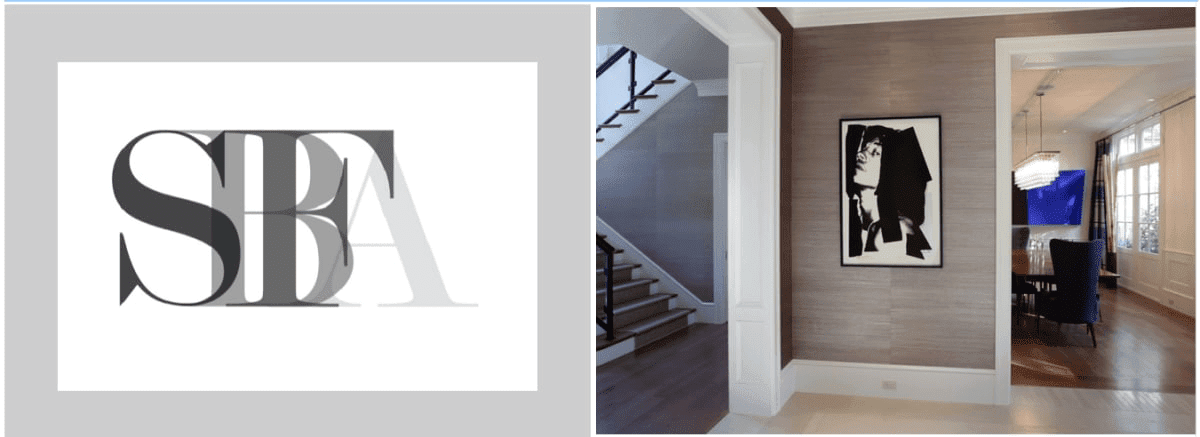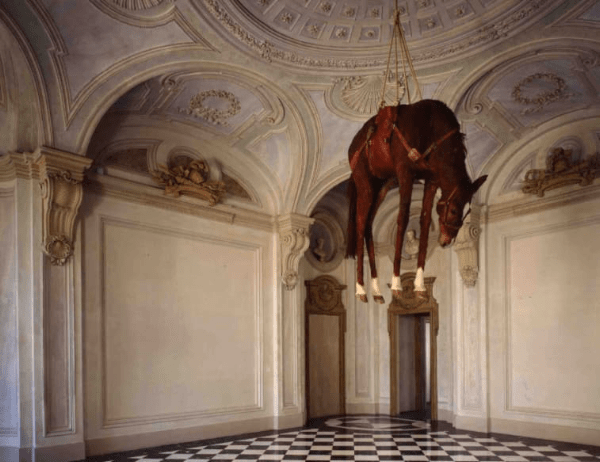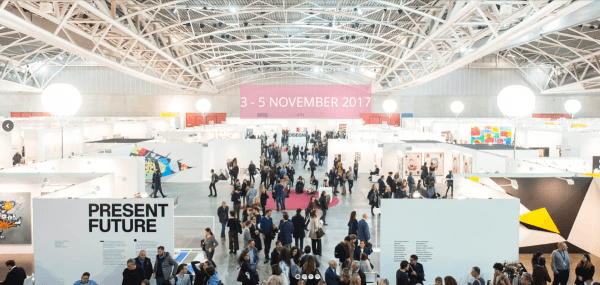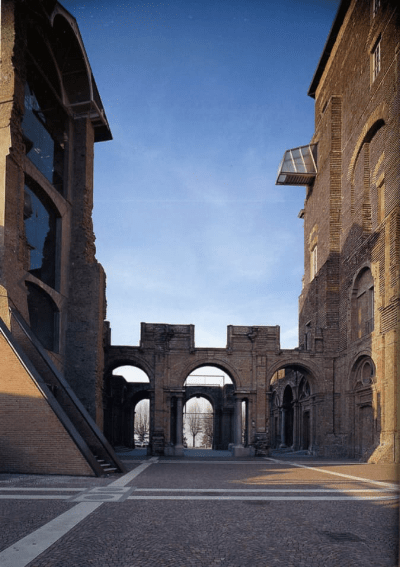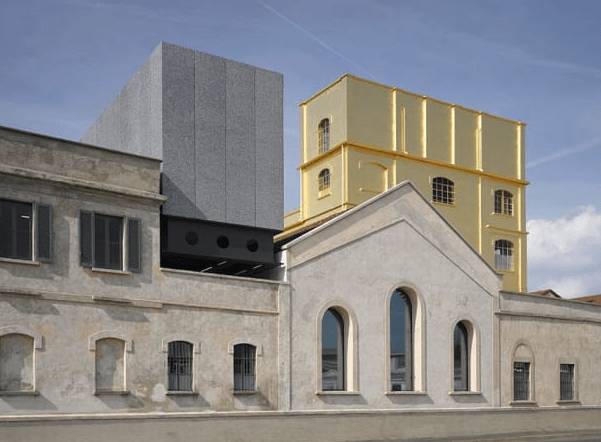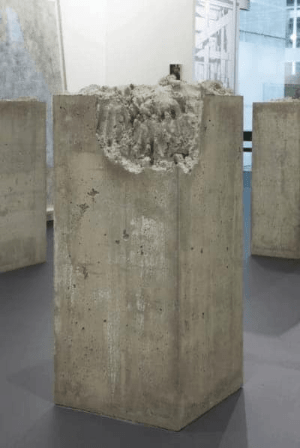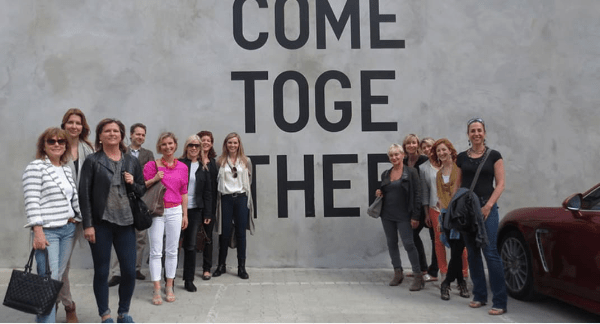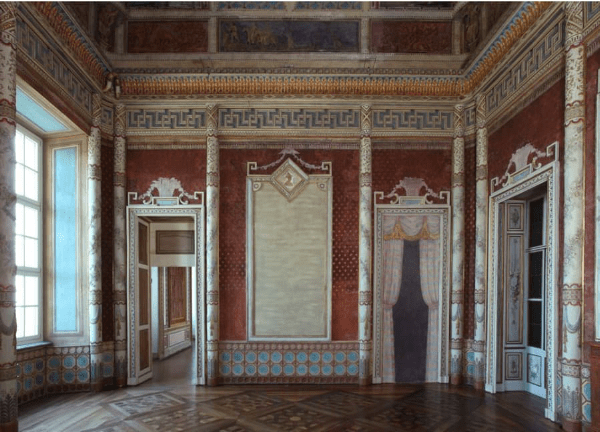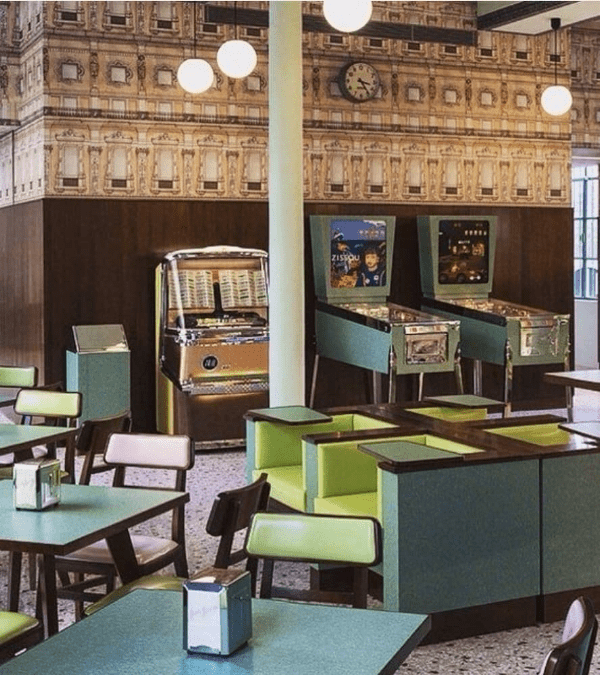FEBRUARY 2018
SARAH BELDEN FINE ART ADVISORY
NEW WEBSITE + BLOG
SBFA LAUNCHES IN MADRID
BRIDGING THE GAP BETWEEN
EUROPE AND THE AMERICAS
SBFA TRAVELOGUE
ITALY
ARTISSIMA INTERNATIONAL ART FAIR, TORINO
WITH CANADIAN COLLECTORS
DAVID & YVONNE FLECK
PRIVATE VISIT TO THE SECRET APARTMENT
OF ITALIAN ARCHITECT & DESIGNER
CARLO MOLLINO, TORINO

CASTELLO DI RIVOLI, PIEDMONT
CÉCILE B. EVANS
FONDAZIONE PRADA
MILANO

IN OUR NEXT BLOG
ART + BLOCKCHAIN
FEBRUARY 2018
To jumpstart the New Year I am very pleased to announce the launch of Sarah Belden Fine Art Advisory in Europe this February. After two years in Toronto, Canada where I worked as International Liaison for Division Gallery, bringing their artists and the gallery to a wider International audience with art fairs, pop up events and exhibitions in New York, LA, Mexico City and Dallas, I am very pleased to announce the expansion of my private art advisory here in Europe, where I will continue working internationally with both private and corporate collectors, bridging the gap between Europe and the Americas, offering more access to artists, galleries, private museum tours and more on both sides of the Atlantic.
In addition to offering specifically tailored art advisory services including acquisitions, collection building and management, deaccessions, insurance appraisals and more, SBFA is now headquartered in Madrid, Spain offering a much-needed link between Europe and the Americas for our clients and gallery partners.
Starting this month SBFA will be publishing a periodical contemporary art travelogue to keep our clients up date with reports on art fairs, gallery and museum exhibitions, new artists projects and current art market news. Please check out our newly revamped website and our inaugural travelogue with a focus on Italy below.
SBFA is also excited to be working on several new groundbreaking international projects including Unique Multiples, a new platform for artists editions using revolutionary new blockchain technology, so stay tuned for more on this cutting edge new platform for contemporary art in our upcoming blog.
Image courtesy of Artissima
To celebrate the launch of SBFA in Europe I begin the season in Italy with a visit to the 24th edition of Artissima, Italy’s premier contemporary art fair in Piedmont’s capital city of Turin. It was a pleasant coincidence that two of Toronto’s most influential and well-respected collectors David and Yvonne Fleck and Barry and Debra Campbell happened to be in Torino for the fair to talk about their collections for Artissima’s Walkie Talkie Series. I walk through the fair with both couples and later speak one on one with Yvonne Fleck about collecting art internationally, video and digital art, new models of patronage and more.

Image courtesy of Casa Mollino
I also visit the private apartment of the illustrious Italian architect, engineer and designer Carlo Mollino and speak with the father and son duo Flavio and Napoleone Ferrari who have singlehandedly revived this incredible personal archive. I learn more about the enigma of Carlo Mollino as an important yet under recognized figure in the history or art and photography and his secret residence on the banks of the Po that houses the unique furniture, objects and art that he collected over 13 years, yet where curiously, he never lived.
Image Courtesy of Castello di Rivoli
After a packed opening night at Artissima held at the Oval Lingotto, I head north to spend the day at Castello di Rivoli - an incredible contemporary art collection housed in a 17th Century Baroque castle in the countryside of Piedmont designed by Italian architect Fillippo Juvarra for a reception in honor of British artist Cécile B. Evans and her award for the Illy Prize.
I also make a quick stop over in Milan for a visit to the Fondazione Prada, Muiccia Prada’s vast and impressive revamped industrial fabrica turned museum, conceived of by star architect Rem Koolhaas. Here, I tour the permanent collection and visit a temporary exhibition curated by Germano Celant featuring Famous Chicago Artists (1965-1975), Leon Golub and H.C. Westerman.
Image Courtesy Prada Foundation
ARTISSIMA INTERNATIONAL ART FAIR, TORINO
WITH CANADIAN COLLECTORS
DAVID & YVONNE FLECK

The 2017 edition of Artissima coincided with the 50th anniversary of Arte Povera and featured two special projects: the Deposito d’Arte Italiana Presente and Piper Learning at the discotheque, a program of events that was coordinated as a classroom and center for art and education. Directed by Paola Nicolin, its aim was to reinvent the relations between practices of teaching and exhibiting and included lectures, interviews, conversations, screenings and DJ sets with over 43 international artists, experts and curators. An Agora of sorts, this was a welcome change to the usual consumer driven art fair mishmash and was an engaging platform where one could take a break from the frenetic pace of the fair and join in an interesting dialogue.
This year the fair also included three curated sections that reinforced Artissima’s unique identity and curatorial focus; Back to the Future, with a focus on work from the 1980s, Present Future, with a variety of works by 20 artists and 23 galleries from a wide geographical range and the new Disegni section, dedicated to the medium of drawing as a particular form of expression. This was coordinated by Luís Silva and João Mourão, curators from the Kusnthall Lissabon in Lisbon, with whom I had the pleasure of working at Zona Maco last year in Mexico City for their curated section Zona Sur, which included text based works by Canadian artist Graham Gillmore.
There was a significant presence of visiting museum curators and boards at this year’s fair, including the Garage Museum of Contemporary Art of Moscow, Palais de Tokyo of Paris, MALBA – Museo de Arte Latinoamericano of Buenos Aires, the Museum of Contemporary Art of Warsaw and the Patrons of Manifesta 2018. Artissima also had a record number of visitors this year.

This year the fairs’ innovative Walkie Talkie series, featuring personal walks through the fair with a number of important and influential collectors, was organized by Berlin/Mexico City-based curator Abaseh Mirvali. While I rarely sign up for these types of events at fairs, I made a point not miss these talks with Toronto collectors David and Yvonne Fleck and Barry and Debra Campbell. As a native Torontonian working in the International art community it was great to gain more insight into these established Canadian collectors and how they started their International collections at a time when Toronto was not the growing art center it is now.

Beverly Pepper Installation, Courtesy Frieze.com
On Friday I met up with Yvonne and David Fleck and an intimate group for their talk at the fair. David began by speaking about the influence his father’s collection had on him growing up. His father Jim Fleck, who is a major Canadian philanthropist, started collecting in the 60s and has an impressive collection that includes works from major international artists such as Johns, Lichtenstein, Oldenberg, Warhol and Christo. The first stop we made on our walk through the fair was at Kayne Griffin Corcoran Gallery (LA), featured in the Back to the Future section. This section was devoted to solo exhibitions of the great pioneers of contemporary art during the period of 1980–1989, and refreshingly featured work by almost 80% female artists. This section of the fair aimed to bring international artists who have played a fundamental role in contemporary art back into the limelight. We stopped to look at the work of 94 year-old sculptor Beverly Pepper, whose work David’s father began collecting in the 60s.
These large, totem-like works made from corten steel were inspired by organic forms from nature and artifacts found on a trip the artist took to Cambodia. David described his fondness for this material, which the couple eventually used to build their impressive Modernist home on the Don Valley River in Toronto with architects Shim-Sutcliffe. Their home, which has since won many architectural accolades, has even attracted the likes of David Bowie who apparently called up Shim-Sutcliffe asking for a tour after reading about the house in the New York Times. Both David and Yvonne talked about their interest in the natural landscape, architecture and design as part of their collecting aesthetic and Yvonne discussed her love of sculptural work that was able to change with its natural environment.
While Yvonne stressed the importance educating oneself, David said he approached collecting from a more intuitive place, since it was such a big part of his life growing up. The couple said they started with photography by artists such as Thomas Ruff, Bernd & Hilla Becher and Candida Hofer as well as Inuit art, which was more accessible in Toronto at that time. Yvonne said they naturally gravitated towards certain dealers “who didn’t try to sell to them but instead tried to educate them” and David spoke about how they sought out advice from another prominent Vancouver based collector, Marshall Webb, who introduced them to many top International gallerists at the time, encouraged them to read everything they could, and to create a strategy for creating a cohesive collection before committing to buying anything.
Next, we stopped at the much lauded, Berlin-based KOW gallery to see the work of Franz Erhard Walther, who was awarded the Golden Lion Award for the 57th Venice Biennale. The couple spoke fondly of Walther’s minimal, geometric, textile works that are meant to be folded, reshaped and inhabited, requiring the viewers participation to activate the work. We then made our way to the eponymous, Torino-based gallery Franco Noero, where Yvonne and Abaseh spoke about one of their favorite artists Jason Dodge, who had one of his colorful folded blankets on display on the floor.

Made by different weavers that the artist works with from with from around the world, these woven blankets are meant to evoke the colors of the sky at a particular time and place and to mark the corresponding distance between the sky and the earth, communicating powerful and poetic narratives through simple conceptual means. At Franco Noero we also looked at the work of Italian artist Laura Favaretto, who similarly works with very minimal objects- in this case, a simple concrete plinth with a chunk removed. Using an economy of visual language, Favaretto celebrates themes of the absurd and the existentially tragic, as well as decay and obsolescence. The booth, while very minimally curated, transmitted a poignancy, which really stood out for me.
Yvonne concluded the talk by telling the inspiring story of how 15 years ago she was working as a docent at the AGO and met several other women in Toronto who were part of a junior women's committee at the museum. This group of women founded Partners in Art, a non-profit arts organisation devoted to raising funding and awareness for the arts in the city. Six months after PIA was established, Yvonne joined the group and went on to eventually became their Co-Chair. PIA was founded by just a few inspired and dedicated women in 2004, who had the goal of creating more opportunities for collaboration, education and awareness around contemporary art in Toronto. Since its inception, PIA has grown to an impressive 150 members, has collaborated with more than 20 organizations on over 62 projects, and has donated more than 4 million dollars to arts initiatives and institutions in Toronto, effectively funding art projects in the city that might not have otherwise been realised.
Photo Courtesy Partners in Art
Later on Yvonne and I spoke further about the importance of cultivating strong relationships with dealers and curators as a cornerstone to collecting. She spoke fondly of Philip Nelson in Paris, Brian Butler at I1301PE in LA and Casey Kaplan in NYC and said these relationships had provided them with an ongoing educational experience that was incredibly rewarding, something I have noticed is always the biggest draw for the most discerning and passionate collectors I have worked with. This lead us to a discussion of patronage as part of a lifelong passion for collecting art and Yvonne explained that she and David felt it was important for Canadian collectors to not just collect internationally for their own personal interests, but to also support bringing more International artists to Canada by investing in museum exhibitions and supporting our institutions. She discussed Toronto-based art advisor David Moos’ innovative strategy to help the AGO fill in the gaps in their collection by creating a consortium of collectors in Canada to donate to an endowment in order to help purchase important international works that the museum simply did not have the acquisition funds to buy. In doing so, a collective effort has been made to help bolster the AGO’s permanent collection and holdings of international artists.
Moos, a former curator at AGO, left his position there to start his own art advisory in Toronto, where he now works with local patrons to acquire significant works both for institutions and personal collections. In speaking about the Canadian arts scene in an interview Moos said, “One piece to the big cultural, visual arts puzzle is missing, and that’s international, contemporary collections.” His innovative initiative helped the AGO acquire important international works that they otherwise would not have been able to buy, a growing issue for museums who have to compete with the HNWI collectors from around the world who are fuelling astronomical prices in the current market for top tier, blue chip works.

We spoke about Yvonne’s love of video and film works, but also about the problems these mediums posed since some reel to reel film works (like a Simon Starling and a Diana Thater they were interested in) were simply too difficult to maintain. We also discussed specific issues surrounding digital and video works, which are in essence fungible, easily reproducible and difficult to authenticate and protect. This lead us to a discussion of and the importance of certificates of authenticity when buying these mediums, especially in light of the growing trend in collecting digital and video work. Yvonne stated that some technical and conservation issues had created certain barriers to what she and David would really love to collect, but that she saw the donation of these more difficult mediums to institutions as a way to at least create public access for these types of works in an institutional setting where they could be properly maintained and shared.
We briefly discussed the digital art platform Sedition, founded by CEO Robert Norton, which offers a subscription based service to its collectors to buy digital art works for display for ones’ home screens, and while Yvonne is not a subscriber, I did have the pleasure of seeing several of Barry and Debra's digital editions from Sedition at their home on display on a large screen T.V.. To my surprise, I found these quite compelling and can see this as a viable growing market in the future, especially as we increasingly experience and discover new art on our smart phones, laptops and tablets at home. As digital and video art become more pervasive, platforms such as Sedition, DAATA Art Editions and even the slick new Samsung Frame will become more common, bringing more digital and video art to a wider audience and into our homes. The issue we are faced with now however, is how to authenticate, protect and copyright these fungible editions in a growing market, especially as more of that market goes online. In my forthcoming blog I will discuss more on this issue and examine how revolutionary blockchain technology will be used in the future to authenticate art works and provide certificates of authenticity for artworks in all mediums...so stay tuned!

Photo Courtesy Samsung Frame
In the still burgeoning Canadian contemporary art scene, it was wonderful to see the initiative of these collectors in taking a lead, along with other art professionals like art advisor David Moos, and non-profits like PIA in creating new strategies to bring more International Contemporary art to our public, private and non-profit Art Institutions in Canada and it was nice to see the presence of these esteemed Canadian collectors participating in an international dialogue and sharing their personal antidotes and insights at Artissima, Torino.
PRIVATE VIEW OF THE SECRET APARTMENT
OF ITALIAN ARCHITECT & DESIGNER
CARLO MOLLINO
TORINO

Photos courtesy of Museo Casa di Mollino
While the charming Northern Italian city of Torino is brimming with museums, stunning architecture, world-class cuisine, culture and history, one of my favorite places to visit is Casa di Mollino. Located in a 19th Century villa on the banks of the Po lies the mysterious apartment that is home to the manifold obsessions of the brilliant architect, designer and photographer Carlo Mollino. Brought back to life by the dashing father and son duo Fulvio and Napoleone Ferrari in1999, Casa Mollino is now run as a private museum and may be visited by appointment only. It is a testament to one of Italy’s most eccentric and enigmatic 20th century designers and an absolute must-see when in Torino.
Upon entering the apartment foyer one is immediately confronted with a gleaming, cobalt blue and white, ornately tiled floor. After quickly surveying the room Mollino’s eclectic aesthetic vision is clearly reflected in every minute detail in the apartment; a Zebra rug strewn across the living room floor; two giant sea shells flanking the French doors to his balcony; a massive wall tapestry displaying a 17th Century monochrome forest scene; two hot pink velvet chairs framing a mirrored and marble fireplace; red velvet drapes a la Twin Peaks, a Japanese bamboo screen and other bizarre curiosities.

Photos courtesy of Museo Casa di Mollino
Fulvio, who is a former curator, dealer of 20th Century Italian design and a Molino aficionado, was not present and instead we were greeted by his charming son Napoleone. Napoleone is a waifish, genteel yet intense soul who seems to know Mollino better than anyone else and has a great flair for storytelling and interpreting what little is known about this hermetic refuge that even Mollinos’ closest friends did not know about.
Mollino was a polymath, a talented engineer, singular architect, racecar designer, accomplished pilot, downhill ski enthusiast, photographer of erotic Poloroids and according to Napoleone, a passionate occultist. While Mollino designed several buildings of note in Italy, the most famous of which is Turin’s Teatro Regio opera house (1965–73), he is probably most well known for his 20th century furniture designs. His elegant and unforgettable, ergonomic and aerodynamic chair, hewn from just a few sleek pieces of wood, is impossible to acquire, even for the most well connected collectors of important 20th Century Italian design. In 2005, one of Mollino’s wood-and-glass tables designed in 1949 sold at Christie’s New York for $3,824,000 — then a record for a single piece of 20th-century furniture.

Photos courtesy of Museo Casa di Mollino
What I found of most interest however, was his collection of over 2,000 erotic Polaroids that were only discovered upon Mollino’s sudden death in 1973 at the age of 68. Napoleone showed me a photo of little Carlo, about 5 years old, with a camera in his hands. He told me that his father, also an accomplished engineer, had used photography to document his buildings and introduced Mollino to the practice when he was a child. They had a darkroom in the family villa where they lived and he could print his photos there. This made him very familiar with the camera and all the processes involved. He began to use the Polaroid camera in 1962 when this was still an avant-garde technology used by very few photographers and artists.
Napoleone explained that Mollino would purchase all of the items of clothing for his models: from dresses, hats and gloves to furs and lingerie whilst on trips to Paris and Milan. He would then stage, style and photograph his models in his villa, always at night. These very carefully constructed images of women reflected Mollino’s interest in the sinuous curves of the female form, as echoed in his deftly designed ergonomic chairs, but also in the mis-en-scene that he carefully constructed around his subjects. More importantly however, this cache of hidden Poloroids reveals Mollino’s keen interest in photography as a modern means of expression.

Photos courtesy of Museo Casa di Mollino
A little known fact, Napoleone explained that Mollino used a sharp metal tool called a ‘sgarzino’ to manipulate and incise the photographs. He also used a tiny brush (likely with just one hair) to paint lines and dots on the surface of the image using a loop mounted to his glasses in order to see. He would then finish this process by retouching the Poloroids with a glossy anti-UV paint. Mollino was a skilled draftsman and Napleone explained that he was even able to draw with both hands simultaneously. Working in this manner, as he did for his architecture and furniture designs, he used these drawing techniques to create an entirely new and experimental art form, which had not previously existed. In this context, he may be considered as an important, revolutionary and under recognized artist in the field of photography at that time.
Napoleone showed me a book from Mollino’s coffee table entitled, Message from the Darkroom that was first published in Italy in 1949. In this heavy and imposing book, displaying the work of 132 photographers, Mollino traces photography’s evolution over the years, highlighting the work of Nada, Hill, Atget, Alvarez Bravo and Man Ray and their mastery of photographic techniques. This illustrates his life long passion for this under recognized medium which he was practicing as a true art form at the time, and gives us great insight into the history of what we now celebrate as one of the most important and pervasive art forms today, photography.
There is much more mystery to Mollino’s story and his secret apartment filled with all manner of curiosities, including what Napleone and his father describe as its associations with a modern-day Egyptian Book of the Dead and the occult, but before I reveal anymore to this fascinating story I would highly recommend you go see it for yourself the next time you are in Torino.
CASTELLO DI RIVOLI, PIEDMONT
CÉCILE B. EVANS
As my peripatetic journey led me from one period of art history to another, I left the 20th century enigma of Carlo Mollino behind to embark on a short trip up North to Castello di Rivoli, another gem of a museum in Piedmont just about an hour’s drive away. The imposing 17th Century Savoy castle situated atop a hill in the picturesque Piedmontese countryside was designed by Italian architect Fillippo Juvarra and is truly one of the most spectacular architectural sites from the period I have seen. Of course it has gained even more allure due to the fact that it is filled with one of the best collections of Contemporary art in all of Italy.

The castle itself is an artwork, from the geometric marble floors, to the delicate frescoed ceilings to the intricate wall moldings, decadent putti and opulent trompe l’oeil - one could be satisfied with this sublime Royal Savoy residence on its own. But to walk through such architectural grandeur and happen upon an entire room dedicated to a permanent installation by Sol Lewitt (wall drawings in graphite and a corresponding geometric sculpture), or to enter the most regal, yet bare room, only to look up and see Maurizio Cattelan’s taxidermied horse precariously dangling from the ceiling by a couple of leather straps, is truly inspiring. To wander through this magical, historic Savoy house filled with incredible site-specific contemporary art is like being in Alice in Wonderland for an art lover like me, and I will never tire of visiting this place.
I arrived just in time for a champagne reception in honor of British artist Cécile B. Evans and her award for the Illy Present Future Prize. The Illy prize, which is awarded each year at Artissima is supported by illycaffè and is awarded only to artists presenting in the Present Future section, devoted to emerging talents. Cécile B. Evans won the previous year for her video work entitled What the heart wants. For her new exhibition at Castello di Rivoli, Evans presented a re-configuration of the work “Amos’ World: Episode One.”

In this video installation, which is conceived like a TV show across three episodes, the artist questions the relationship between humans and new technologies and the value of emotions in contemporary society by exploring new forms of human subjectivity. Unfortunately the video, which was about 30 minutes long was installed in a tiny Rafman-esque vestibule and only allowed for one or two viewers at a time, making it very difficult for most people to even get a chance to see it. This up and coming Belgian-American artist, who lives in London and Berlin, has already held numerous exhibitions including a solo show at the Tate Liverpool and the ninth edition of the Berlin Biennale, in 2016.
The museum’s impressive permanent collection includes works from the mid-60s until today, the core of which consists of works of Transavantgarde, Arte Povera, Minimal, Body and Land Art right up to the most contemporary works by artists such as Cécile B. Evans, Rachel Rose and Ed Atkins. There is also a major video collection that was started in 2000 that includes a number of artistic films and videos by Nam June Paik, Bill Viola and Vanessa Beecroft.

Photo Courtesy Castello di Rivoli
One of the special aspects of Castello di Rivoli’s collection that I love is the close relationship it has set up with its artists, which over the years has led to the production of large site specific permanent installations, specially made for the Castello in perfect dialogue with the architecture of this historic Residence. Some of these major permanent installations include works by Maurizio Cattelan, Sol Lewitt, Lawrence Weiner, Joseph Bueys, Richard Long, Haim Steinbach and many more (although as usual, dissappointingly, there are not nearly enough women included in the museum’s collection).
FONDAZIONE PRADA
MILANO

Image courtesy of Prada Foundation
Speaking of incredible architecture another not-to-be missed museum one must visit while in Italy is the Fondazione Prada. Opened only a little over two years ago in the Spring of 2015, I would argue this is the much-lauded Italian Fashion magnate’s crowning achievement. Miuccia Prada and her husband have been serious collectors for over 20 years, staging exhibitions in abandoned warehouses and other unconventional venues around the world until they finally decided to open a permanent home for their vast holdings in an 18th century palazzo in Venice in 2011.
Now the Foundation has decided to create a much larger outpost in Milan, the fashion label’s hometown. Located in a rather derelict district in Milan on the site of an old distillery dating back to 1910, the Dutch architect Rem Koolhaas and his firm OMA have worked their magic and created an oasis of art and architecture with an impressive and sprawling complex of nearly 120,000 square feet that is sure to become a major international destination for the arts.
I happened to be in Milan during the Foundation’s opening a few years ago and saw the inaugural exhibition “Serial Classic,” featuring first-century bronzes and marble busts coming from more than 40 museums, including the Louvre, the Prado, the British Museum and the Metropolitan Museum of Art in New York. These works were meant to explore notions of the original and imitation using Roman antiquities that were in fact, reproductions of lost Greek originals themselves. I thought this was an ingenious exhibition that highlighted so many prevalent discussions in contemporary art today and even though I saw this show back in 2015, it still sticks in my mind.

Photo Courtesy Prada Foundation
On my second visit I had the pleasure of seeing a few new exhibitions in addition to the vast permanent collection, which includes an entire subterranean, site specific space dedicated to Thomas Demand’s Grotto, and a permanent installation housed in the impressive gilded tower OMA created referred to as the “Haunted House.” This strange building that looks like something from a futuristic fairy tale, features some of the best surrealist works by two of my favorite artists Robert Gober and Louise Bourgeois. Climbing the steep, winding stairs one discovers several secluded environments featuring various installations and standalone sculptures. Louise Bourgeois’ Cell (Clothes) from 1996 is a round construct of doors, garments and sewn sculptures which draws you in with its oppressive psychological presence. Similarly, Gober’s wrought-iron sewer, replete with gurgling running water, pebbles and a glowing human heart installed right in the gallery floor, successfully piques the viewers interest and anxiety simultaneously. The haunted house seems an apt name for this eerie, dreamlike place and if you are a fan of Gober or Bourgeois it is another must see.
After all the planes, trains and automobiles, I definitely needed some sustenance before perusing 120,000 square feet of the collection and had to make a quick pit stop at the “classic Milanese” Bar Luce created by beloved American film auteur Wes Anderson. Im a huge fan of his films and embarrassingly have seen every one at least 10 times, so I felt like a kid in a candy store next to his Team Zizou pinball machine, gelato station and jukebox. Like Anderson’s own impeccable flair for mis-en-scene this café’s design could not be more spot on. While sipping the requisite Aperol spritz and munching on a panini I basked in the glow of the pistachio green and pastel pink 1950’s formica tables and the matching too-perfect-to-eat pink marzipan cake eying me from the glass display case, while the immaculately dressed Italian waiters in starched white shirts and stiff black bow ties marched back and forth between the glamorous crowd and the packed bar.

Before I go on about pink marzipan or more architecture though I should mention the actual shows on view, “Leon Golub” “H. C. Westermann” and “Famous Artists from Chicago. 1965-1975,” which I found rather lackluster after the Foundation’s inaugural show “Serial Classic.” I appreciated curator Germano Celant’s strategy in reinterpreting this particular moment in contemporary art history that has been overlooked by critics at a time when New York’s Ab-Ex giants loomed large, but apart from Leon Golub’s impressive exhibition, featuring a room full of monumental canvases and photographs painted on transparent paper depicting his characteristic scenes of brutality, war and violence, the rest of the exhibition fell rather flat for me.
In Celant’s exhibition, devoted to two generations of artists formed in Chicago between the 50’s and the 60’s I did make one new discovery, which made the entire show worth it for me, the American painter Christina Ramberg. Ramberg was one of the few women associated with the Chicago Imagists, a group of representational artists such as Jim Nutt, Gladys Nilsson, Roger Brown and Ed Paschke who attended the School of the Art Institute of Chicago in the late 1960s. Ramberg’s formalist, precisely and meticulously painted works on masonite featuring women clad in tight corsets and lingerie were influenced by Surrealism, Pop Art, West Coast underground comic illustration, Japanese prints and advertisements from the 50s. With these dark and provocative works, rendered in her own signature muted palette, Romberg has successfully achieved a highly unique and edgy style all her own. Her tightly cropped images depicting women in various states of undress, or oddly configured hands with lacquered nails, bound in black silk ribbon are erotic, comic and sinister all at once and they definitely stood out amongst the rest of the works in the exhibition. I also noticed one of the works was a loan from the collection of the illustrious, American mega collector Beth Rudin DeWoody, definitely something of note.

IN OUR NEXT BLOG
ART + BLOCKCHAIN

